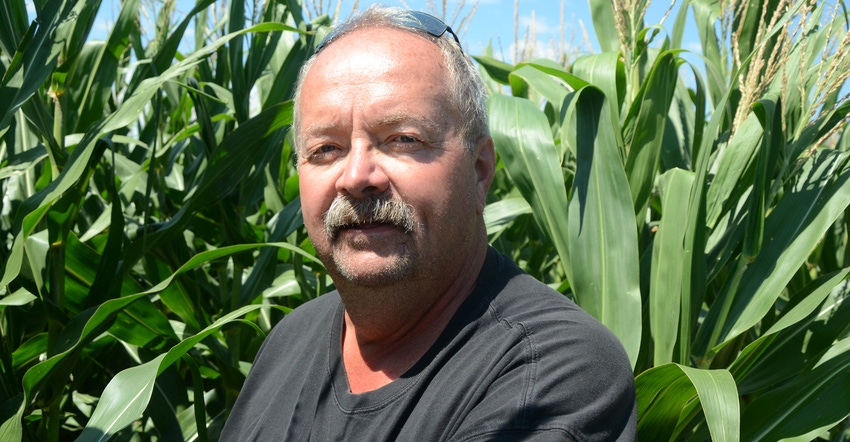
Whether it's soil temperature, soil moisture, weather forecasts, crop stress, scouting or market updates, today's farmers have a number of apps at their fingertips. The challenge has been integrating data from all these apps and sensors into one central hub.
Roric Paulman, who farms10,000 acres near Sutherland, Neb., generates 1 terabyte of data each month — and has about 40 different apps on his phone to help make farm management decisions.
"It's a blessing, and it's also a bit of a curse for producers. There are a lot of tools out there," Paulman says. "Whether it's profitability, better growing conditions, singulation on seeding rates, which of those tools do you actually want to use?"
IBM recently announced its latest foray into precision ag with the release of the Watson Decision Platform for Agriculture. This platform allows Paulman and other growers to bring various apps and tools together in a single hub, and integrates an electronic field record to keep track of all the grower's fields on mobile or web-based apps.
The platform draws on IBM's capabilities in artificial intelligence, analytics, the “internet of things” (IoT), the cloud and weather data for a new resource that covers the span of the farm-to-fork system.
IBM provides data sets like satellite imagery, weather and soil mapping data, and incorporates data from The Weather Co., an IBM business, to provide historical weather data and forecasts. IBM has also partnered with different organizations for data analysis. For example, GiSC, a grower-run cooperative, integrates with the decision platform to help producers get the most out of their data.
"We asked, 'How do we get this data to one platform? How do you get data where it needs to be? How do you protect the data? But more importantly, the farm-to-fork concept: How do you meet those expectations for consumer and processor?' They tackled it with this IoT platform," Paulman says. "You can look at crop health, field level weather, forecasts. They have a pest and disease app that is plugged in. You just take a picture of the leaf, and it identifies it with a certain level of accuracy. It's a big deal that IBM is pulling into this space."
Sharing information
IBM also hopes the platform will help bridge the gap between the rest of the farm-to-fork system —food companies, retailers and consumers. In this way, the platform can provide transparency between processors, retailers and growers who are willing to share certain data.
While farmers can use the platform to manage inputs, help with scouting and integrated pest management, and market their crops, processors can use certain data from farmers willing to share it to improve transparency.
One of the biggest challenges farmers face is knowing when to sell their crops. The platform offers a tool that pulls data pricing data from the local grain elevator and the futures markets, and recommends the best time to sell a crop to maximize profit. Meanwhile, growers have inventory data and input data at their fingertips to help make better marketing decisions.
The electronic field record includes a range of field-level data such as soil type, drainage, tillage, soil moisture and temperature, and high-resolution imagery from multispectral satellites, unmanned aerial vehicles and aircraft.
Growers can use this aerial imagery and AI-enabled visual recognition analysis to identify a pest and disease risk in advance. The app also allows the grower to monitor crop health and stress, and identify the exact pest or disease.
On Paulman’s farm, an agronomist currently visits once a week to analyze potential disease and insect infestations. Now, with a simple photo, Paulman says he can immediately identify insects in crops, and decide whether an insecticide application is needed.
"Let's say you see a bug that you can't identify, and plug it in, and it says it's a ladybug, and it's a beneficial. There's no way an agronomist can see your whole field," he says. "This is a whole-field view, and a whole-field view only makes sense if you have the right resolution and a good understanding of how old the data is."
About the Author(s)
You May Also Like






